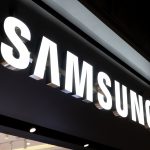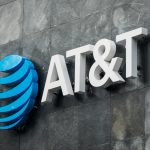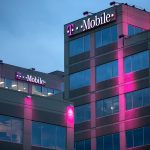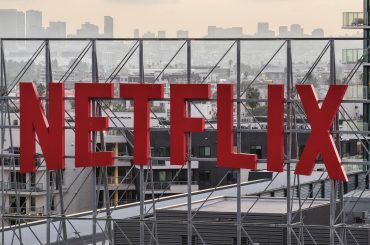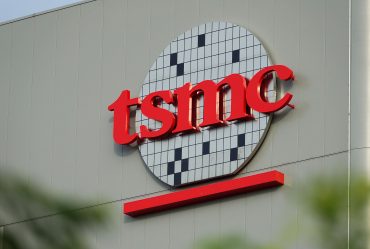
- Earnings Season
- Infrastructure Investment
- Telecom
Fiber Keeps AT&T’s Growth Engine Running Despite Q3 Miss
9 minute read

Fiber expansion and subscriber momentum steady AT&T’s third quarter as the telecom giant leans on convergence, capital efficiency, and infrastructure-driven growth.
Key Takeaways
- Revenue advanced 1.6% year-over-year to $30.7 billion, narrowly missing the $30.86 billion consensus, while adjusted EPS held at $0.54, meeting expectations; net income surged to $9.7 billion, inflated by a $5.5 billion gain from the DIRECTV divestiture.
- Mobility delivered 405,000 postpaid phone net additions—exceeding estimates by 66,000—and 748,000 total wireless subscribers, propelling service revenue 2.3% higher to $16.9 billion amid historically low churn of 0.92%.
- Broadband fiber captured 288,000 new subscribers, contributing to 232,000 total broadband net adds; management reaffirmed FY2025 guidance for adjusted EBITDA growth exceeding 3%, with capital expenditure of $22-22.5 billion earmarked for convergence infrastructure.
Introduction
AT&T Inc. reported third-quarter results on October 22, 2025, that illustrated the company’s quiet progress in an industry now defined more by infrastructure competition than subscriber wars. Revenue climbed 1.6% to $30.7 billion—falling just short of Wall Street’s $30.86 billion estimate—while adjusted earnings per share matched forecasts at $0.54. Net income reached $9.7 billion, substantially elevated by a $5.5 billion accounting gain from the company’s exit from its remaining DIRECTV stake.
The quarter arrives as the 5G buildout matures and wireless penetration approaches saturation. Competition has shifted to fiber broadband and the bundling of connectivity services—a transition visible throughout AT&T’s results. Postpaid phone additions of 405,000 handily surpassed estimates, while fiber subscriber growth accelerated to 288,000 net adds. These wins drove a 2.8% pre-market rally in shares, though the revenue shortfall ultimately constrained gains.
Chairman and CEO John Stankey framed the performance within the company’s strategic pivot: “We have the key building blocks in place to give our customers the best connectivity experience in the industry and we’re winning the race to lead in convergence.” The comment captures AT&T’s post-WarnerMedia identity—a return to telecommunications fundamentals backed by a $22-22.5 billion capital program aimed squarely at fiber deployment and network densification.
Key Developments
AT&T’s third quarter showed operational strength across its core businesses, even as top-line growth remained constrained by declines in legacy services. Consolidated operating income expanded dramatically to $6.1 billion from $2.1 billion a year earlier, primarily reflecting the DIRECTV transaction gain, while adjusted operating income advanced modestly to $6.6 billion. Adjusted EBITDA reached $11.9 billion, up from $11.6 billion.
The Mobility segment—contributing 71% of total revenue—generated $21.7 billion in quarterly sales, a 3.1% increase, with service revenues advancing 2.3% to $16.9 billion. The 405,000 postpaid phone net additions exceeded consensus by 66,000 subscribers, bringing total wireless net adds to 748,000. Postpaid ARPU declined 0.8% to $56.64, reflecting competitive promotional activity, though postpaid phone churn of 0.92% rose merely 14 basis points year-over-year. Equipment revenues grew 6.1% to $4.8 billion, benefiting from ongoing device upgrade cycles.
Consumer Wireline produced the quarter’s strongest growth. Revenue increased 4.1% to $3.6 billion, powered by an 8.2% gain in broadband, where fiber revenues surged 16.8% to $2.2 billion. The business added 232,000 net broadband subscribers, comprising 288,000 fiber connections partially offset by copper attrition, alongside 270,000 AT&T Internet Air fixed wireless subscribers. Fiber ARPU expanded 4.4% to $73.48, demonstrating pricing power in premium broadband. Operating income doubled to $325 million, with adjusted EBITDA climbing 15.1% to $1.3 billion.
Business Wireline continued its structural decline, with revenues falling 7.8% to $4.2 billion as enterprise customers migrate to IP-based solutions, resulting in a $354 million operating loss. Latin America provided modest diversification, with revenues advancing 7.1% to $1.1 billion.
Cash generation remained robust: operating cash flow held steady at $10.2 billion, enabling $4.9 billion in free cash flow—up from $4.6 billion—and supporting $1.5 billion in share repurchases under a $4 billion 2024 authorization. Over 41% of fiber households now bundle with mobility services, establishing the convergence model that management expects will drive ARPU expansion.
Market Impact
The market’s reaction to AT&T’s results reflected competing narratives within the quarter. Shares rose 2.8% in pre-market trading on subscriber outperformance, outpacing a flat S&P 500, though gains moderated to under 1% by midday as investors absorbed the revenue miss. Analyst commentary leaned positive: JPMorgan reaffirmed its “overweight” rating with a $24 price target, highlighting “strong wireless and fiber execution,” while Wells Fargo characterized the revenue shortfall as “manageable given capital discipline.”
Peer performance diverged. Verizon declined 0.5% on comparable subscriber pressures, while T-Mobile advanced 1.2% amid continued 5G momentum. AT&T’s forward price-to-earnings multiple of 8.5x—below Verizon’s 9.2x—presents a potential value opportunity, particularly given the company’s 6.4% dividend yield. Net debt stands at $118.8 billion, representing 2.6x adjusted EBITDA.
Credit quality metrics remained solid, with no loan loss provisions and stable leverage ratios, even as quarterly capital expenditure moderated to $4.9 billion from $5.3 billion. The efficiency ratio of 61% reflects ongoing cost discipline, though persistent headwinds in Business Wireline complicate the broader narrative.
Strategic Insights
The quarter’s 405,000 postpaid phone additions—substantially exceeding estimates—support AT&T’s convergence strategy, whereby fiber and mobility bundling now penetrates 41% of fiber households, driving both ARPU expansion and customer retention. Fiber’s 288,000 net additions, contributing to 3.2 million year-to-date growth, underscore the accelerating deployment: the pending $5.75 billion acquisition of Lumen’s fiber assets, expected to close in early 2026, will add 2.6 million serviceable locations, with management exploring equity partnerships to optimize capital allocation.
Stankey’s claim of “winning the race to lead in convergence” finds support in fiber ARPU’s 4.4% expansion to $73.48. The $5.5 billion DIRECTV divestiture gain—closing the books on a disastrous $67.1 billion 2015 acquisition—frees balance sheet capacity for the $23 billion EchoStar spectrum transaction, scheduled to close in the first half of 2026, strengthening mid-band 5G coverage.
Total debt of $139.5 billion carries net leverage of 2.6x EBITDA—approaching management’s 2.5x target—though the spectrum acquisition will temporarily elevate leverage toward 3.0x. This remains manageable given cash flow stability.
Structural challenges persist. Business Wireline’s 7.8% revenue contraction highlights enterprise migration to cloud-native architectures, while Latin America’s 7.1% growth provides insufficient offset. Capital intensity—holding at $22-22.5 billion for fiscal 2025—reflects management’s emphasis on return optimization over network ubiquity, particularly as edge computing and private 5G networks create enterprise opportunities.
Data and Forward Outlook
Subscriber momentum continues: 405,000 postpaid phone additions drove 748,000 total wireless net adds, while broadband’s 232,000 net additions (288,000 fiber) expanded serviceable locations to 35 million. ARPU trends showed resilience—mobility at $56.64 despite modest pressure, fiber at $73.48 exhibiting pricing power—while R&D intensity at 2% of revenue funds ongoing 5G-Advanced development.
Management reaffirmed fiscal 2025 guidance: adjusted EBITDA growth exceeding 3%, mobility service revenue growth of approximately 3%, consumer fiber broadband subscriber growth in the mid-to-high teens, capital expenditure of $22-22.5 billion, and free cash flow in the low-to-mid $16 billion range. The 2026-2027 outlook projects low-single-digit service revenue growth, 3%-plus annual EBITDA expansion, double-digit EPS growth by 2027, and free cash flow of $18-19 billion.
Analysts broadly support the trajectory. Morgan Stanley projects fiber growth contributing 5% to 2026 EPS expansion, though revenue risks from business wireline declines persist. A 50-basis-point interest rate increase would pressure annual interest expense by approximately $200 million, partially mitigated by $4 billion in authorized buybacks and dividend stability.
Conclusion
AT&T’s third quarter—$30.7 billion in revenue accompanying substantial subscriber gains—represents steady execution of a company repositioning for a fiber-centric future. The 405,000 postpaid phone additions and 288,000 fiber subscribers support a convergence strategy that prioritizes infrastructure quality over promotional intensity.
While the modest revenue miss underscores persistent headwinds in legacy businesses, the operational fundamentals remain sound: low churn, expanding fiber ARPU, robust free cash flow generation, and improving capital efficiency. The pending Lumen acquisition and EchoStar spectrum transaction position AT&T to extend its fiber footprint and densify its 5G network, creating the infrastructure foundation for service revenue growth.
For institutional investors seeking telecommunications exposure, AT&T presents a straightforward value proposition: a 6.4% dividend yield backed by improving free cash flow, a forward P/E below sector peers, and a management team executing a coherent strategy. The company’s transformation from media conglomerate back to telecommunications pure-play continues, suggesting that in an industry increasingly defined by infrastructure advantage, disciplined capital deployment may prove more durable than speculative growth narratives.

